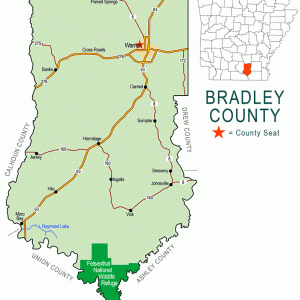calsfoundation@cals.org
Banks (Bradley County)
| Latitude and Longitude: | 33°34’29″N 092°16’09″W |
| Elevation: | 207 feet |
| Area: | 0.38 square miles (2020 Census) |
| Population: | 87 (2020 Census) |
| Incorporation Date: | August 31, 1907 |
Historical Population as per the U.S. Census:
|
1810 |
1820 |
1830 |
1840 |
1850 |
1860 |
1870 |
1880 |
1890 |
1900 |
|
– |
– |
– |
– |
– |
– |
– |
– |
– |
– |
|
1910 |
1920 |
1930 |
1940 |
1950 |
1960 |
1970 |
1980 |
1990 |
2000 |
|
244 |
347 |
199 |
248 |
240 |
233 |
189 |
216 |
88 |
120 |
|
2010 |
2020 |
|
|
|
|
|
|
|
|
|
124 |
87 |
|
|
|
|
|
|
|
|
Banks is one of only three incorporated communities in Bradley County. Once known for its relationship to the railroads and the timber industry, the town is now chiefly considered a center for hunters in the southern Arkansas forests.
Caddo lived in the region where Banks is located as much as 5,000 years ago. Eventually, European and American explorers and settlers arrived in what is now Arkansas, and the Caddo were moved farther west. Among the first landowners in the area were John McFarlin (who obtained his land grant in 1856), John Evans, and Pleasant D. Morgan—the latter two claiming their land in 1860. Before the Civil War, some land was cleared in the area for the construction of the Mississippi, Ouachita and Red River Railroad (MSRRR), which had been chartered in 1852. Tracks were not completed, though, before the outbreak of the Civil War ceased railroad construction in Arkansas.
After the Civil War, investors from northern states became interested in the natural resources of Arkansas. Bradley County was particularly noted for its trees, and James E. Lindsay of Davenport, Iowa, was one of the investors drawn to the area. His company, Lindsay Land and Lumber, acquired property in 1883 at the location that would become Banks. Around this time, the Choctaw, Oklahoma and Gulf Railroad built a line through Bradley County, laying tracks that would later be acquired by the Chicago, Rock Island and Pacific Railroad. A depot built on the line led to the establishment of a post office that was first called Morgan, probably for Pleasant D. Morgan. In 1899, a sixteen-mile railroad was built for traffic between Morgan and Warren (Bradley County), the county seat, using some of the land that had already been graded for the MSRRR. Known as the Warren and Ouachita Valley Railroad, the line was built by the Arkansas Lumber Company and the Southern Lumber Company, but it later was acquired by the Rock Island line.
Though it never gained the size or the reputation of Warren or Fordyce (Dallas County), the community known at first as Morgan was also a lively lumber town. The intersection of railroads led to the emergence of stores and houses. For reasons no longer remembered, the post office changed its name in 1906 to Banks. The next year, the town of Banks was incorporated. By 1910, it had 244 citizens. Over the years, the population fluctuated, reaching a high of nearly 350 in 1920 but dipping below 100 in 1990.
The decline in population was no doubt due to the completion of the timber industry’s logging of the area. Rail traffic continued on the Rock Island line until the railroad went bankrupt in the 1970s and completely shut down in 1980. By this time, Highways 4 and 275 had been built through Banks, connecting it to the larger cities of southern Arkansas.
As of 2013, Banks has several businesses and enterprises, although only the fire department has more than five employees. There are number of churches in Banks including Baptist, Church of God in Christ, and Presbyterian. The population in 2010 was 124.
To mark the opening of deer hunting season in Arkansas, Banks holds the Buck Fever Festival the second weekend of each November. Started in 1987, the festival features a parade, a talent contest, music and dance, a horseshoe tournament, vendors of food and craft items, and an ecumenical worship service.
For additional information:
Balogh, George W. Entrepreneurs in the Lumber Industry, Arkansas, 1881–1963. New York: Garland Publishing Inc., 1995.
Hull, Clifton E. Shortline Railroads of Arkansas. Hart, MO: White River Productions, 1997.
Steven Teske
Butler Center for Arkansas Studies
 Bradley County Map
Bradley County Map 




Comments
No comments on this entry yet.